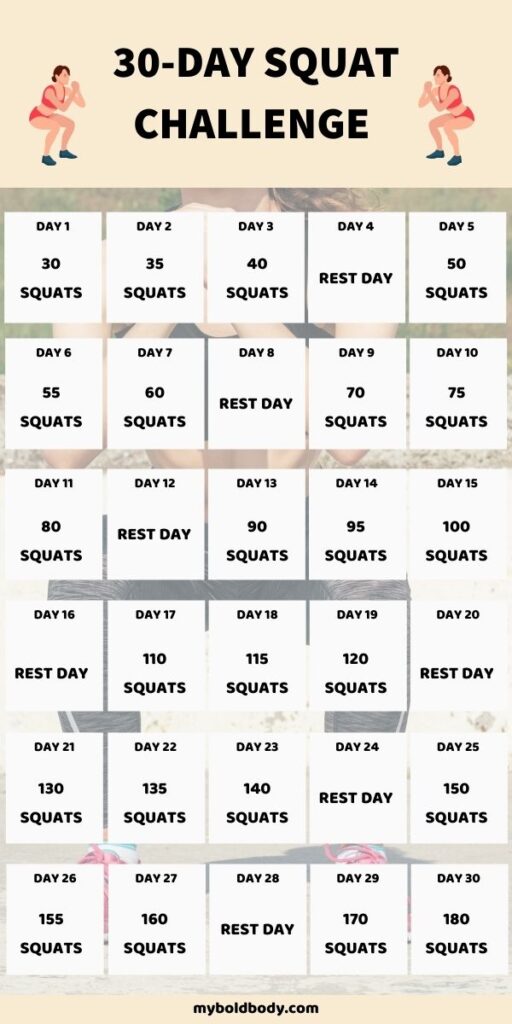This post may contain affiliate links. For more info, please read our full disclosure here
Looking for some brilliant ways to work out your lower body? This simple 30-day squat challenge might be just what you need.
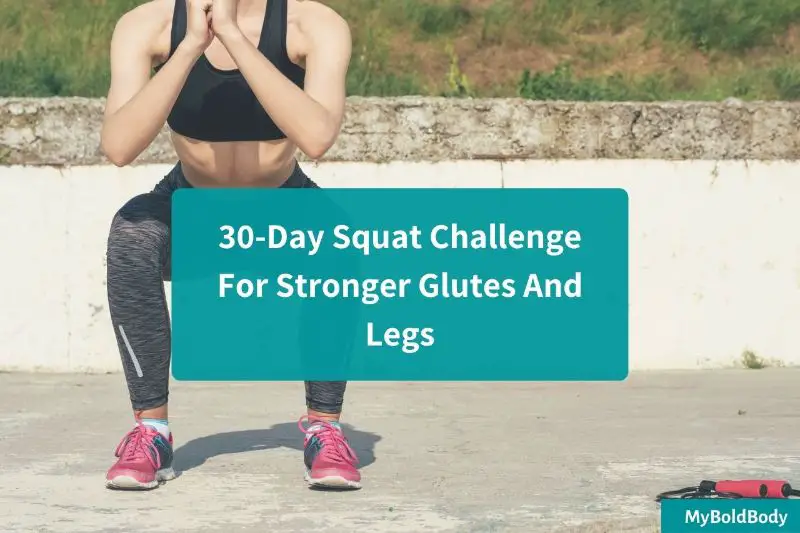
When it comes to lower body workouts, squats are arguably one of the best things you can do. And their benefits extend far beyond just sculpting a nicer posterior.
If you’re looking to improve your lower body fitness, then adding squats to your workout routine is a great way to start.
A simple 30-day squat challenge like this, can help you reap the benefits that come with doing this amazing lower body workout.
Plus, the challenge requires absolutely no equipment to get started, and can easily be done from the comfort of your home too.
We’ll also discuss different variations to try out if you’d like, as well as a couple of tips to help you get started.
Let’s get right into it.
Why Squats Are Great

You’ve heard tons, if not hundreds of people swear by them. But what good do squats actually do? Here are some reasons why squats are an amazing and effective exercise to do.
1) Helps To Build Muscle
As with any other exercise, squats are done by engaging certain muscle groups. In this case, the muscle groups worked are the glutes, quadriceps, hamstrings, hip flexors, lower back, and calves.
While the majority of the muscles worked appear to be in the lower body, certain squat variations may also work out some muscles in the upper body to some extent.
This is great for building stronger and better muscles, as we all know that muscles will grow and improve when they are put under reasonable stress over time.
Also See: 30 Day Ab Challenge For A Flat And Toned Belly
2) Can Help To Burn Calories
You may not have thought about it, but squatting can actually help you torch a few extra calories.
According to Greatist, a person weighing about 140 pounds can expect to torch somewhere around 220 calories, performing squats at a high intensity for 25 minutes.
And that’s just for basic squats. Some tougher variations like jump squats, or even just adding weighted equipment, can help push that number even higher.
Also see: Best Home Workouts That Will Help You Burn The Most Calories
3) Helps Maintain Proper Posture
The lower back and core are two parts of the body that affect posture. Different squat variations can help work out these parts of the body to a reasonable extent, thereby contributing to a better posture overall.
Other benefits associated with squats include;
4) Improving athletic performance
5) Helping to prevent certain injuries
6) Building tougher joints, and more.
Also See: 15-Minute No Equipment HIIT Workout Plan To Help You Burn Fat
The 30-Day Squat Challenge
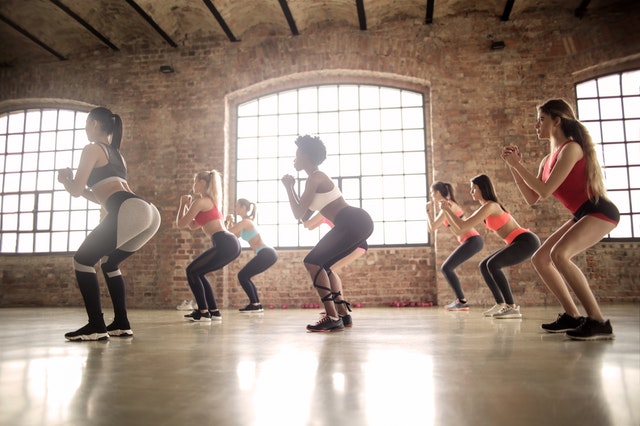
Alright, let’s get straight into business. What exactly is this 30-day squat challenge, and how exactly does it work?
Well, it’s really simple. It features
- 30 days of squats, starting out at 30 squats on the first day
- An increment of 5 squats per progressive day, and 10 on the days after rest day
- Finally finishing up at 180 squats on the last day, with the last day having an increment of 10 squats to top it all off
It’s important to note that you don’t have to do all the squats for a certain day in one go. In fact, we wouldn’t recommend it. Breaking it up into as many sets that makes it comfortable for you is the key here.
You also don’t have to stick to just the basic squat. I’ll also be sharing a couple of squat variations you could try out if you’d like to spice things up.
Squat Variations To Try Out
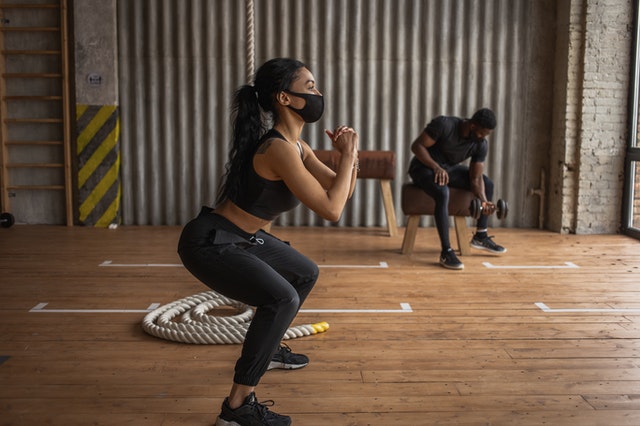
When it comes to doing squats, there are literally so many variations you could try out. For this challenge, we’ll mainly be focusing on the ones that can be done with almost no equipment.
However, if you have a couple of variations you’d like to try out yourself, you’re welcome to add them too.
This 30-day squat challenge features 5 main variations, which aims at working all the muscles in your lower body, as well as some muscles in the upper body too.
The variations are;
- Basic squats
- Sumo squats
- Jump squats
- Side squats
- Squat pulses
1) Basic/Standard Squat
They say before learning to run, we first need to learn to walk. In order to carry other squat variations effectively, we must first learn how to properly do a basic squat.
Luckily, it’s pretty simple. To do a basic squat, you’ll need to
a) Get into a normal standing position, with your back straight, and giving a distance of about a hip or shoulder’s width between your legs.
b) In terms of foot position, it is normally advised to either keep your feet straight, or pointing out at a small angle of about 5 to 15 degrees.
c) Remember to keep your shoulders straight, chest up, and head facing forwards during the movement.
d) While imagining an invisible chair you’re about to sit back on, begin to lower your body, by bending your knees, and with your hips gradually pushing backwards.
e) Squat downwards until your knees are about a 90 degree angle, or your thighs are about parallel to the floor. Remember to keep your heels on the ground during this movement.
f) Gradually straighten your body back up, and return to your previous standing position.
Here’s a video representation to show you how it’s done.
2) Sumo Squats
The sumo squat is one of the most popular variations of the standard squat. It’s performed pretty similarly, except in this case, your feet are pointed out at a wider angle than the regular version.
While this activates a lot of the lower body muscles just like the regular squat, the greater angle of the foot helps it to better work out the inner thighs.
To do the sumo squat;
a) Assume a normal standing position, but this time, giving a wider distance between your legs (more than a shoulder’s width).
b) In terms of foot position, you want your feet to be pointed out this time, at about a 45 degree angle.
c) As with any other squat, keeping your chest straight and head forwards up throughout the movement is important, and will help prevent you leaning forward excessively.
d) Lower your body into the squat position by bending your knees and pushing your hips backwards, till your knees are at about a 90 degree angle, or your hips are almost parallel to the floor.
e) Slowly raise your body back up and assume your initial standing position.
Here’s an in-depth video representation that shows you how it’s done.
3) Jump Squats
If you’re looking to add a bit of cardio into your standard squatting routine, then jump squats are an amazing variation to try out.
They’re basically your standard squat, followed by a jump, and then back to a squat, all while maintaining proper form.
To do them;
a) Assume a normal upright standing position, with your legs about a shoulder’s width apart, and your feet tilted out slightly, at about a 5 to 15 degree angle.
b) Perform the standard squat, as described earlier.
c) While in the squat position, engage your core and lower body, to push yourself upwards into a jump.
d) As you come back down to the ground, assume the standard squatting position, and repeat.
Here’s a video representation to show you how it’s done.
4) Side Squats
Also known as lateral squats, these incorporate a simple side to side movement into your regular squatting process. They’re great for your glutes, legs, as well as your inner and outer thighs.
To do the side squat;
a) Assume a normal standing position, with legs about hip or shoulder’s width apart, and feet either straight, or tilted slightly.
b) With your chest upright and your head facing forward, move your right leg out horizontally, about couple of feet to the side, while keeping the left leg in position.
c) Initiate a squat, in the direction of your right leg, until your right knee is at about a 90 degree angle, or your right hip is almost parallel to the floor
d) Push through with your right leg, to return to your normal standing position, and repeat the same motion for your left leg.
Here’s a video representation.
5) Squat Pulses
These are another amazing variation to try out. They’re pretty similar to your regular standard squat, but with one exception.
With squat pulses, you don’t come up all the way when doing them. Rather, you come up only about halfway, and perform the squat again, which imitates a sort of “pulse” or bobbing motion.
Here’s how to do them.
a) Get into a normal standing position, with your back straight, and about a hip’s or shoulder’s width distance between your legs.
b) Perform the standard squat, as described earlier.
c) Rather than coming up all the way, come up only a few couple inches, and then return back to the squat position and repeat the motion, moving up and down for the desired number of times.
Here’s a video representation that shows how it’s done.
The Schedule
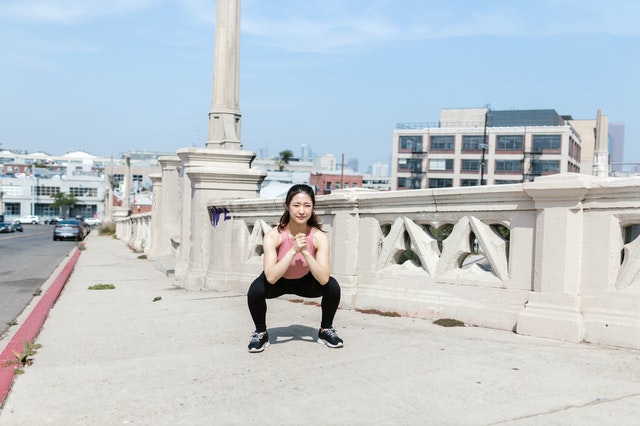
Week 1
- DAY 1 – 30 squats
- DAY 2 – 35
- DAY 3 – 40
- DAY 4 – Rest day
- DAY 5 – 50 squats
- DAY 6 – 55
- DAY 7 – 60
Week 2
- DAY 8 – Rest day
- DAY 9 – 70 squats
- DAY 10 – 75
- DAY 11 – 80
- DAY 12 – Rest day
- DAY 13 – 90 squats
- DAY 14 – 95
Week 3
- DAY 15 – 100
- DAY 16 – Rest Day
- DAY 17 – 110 squats
- DAY 18 – 115
- DAY 19 – 120
- DAY 20 – Rest Day
- DAY 21 – 130
Week 4
- DAY 22 – 135
- DAY 23 – 140
- DAY 24 – Rest day
- DAY 25 – 150
- DAY 26 – 155
- DAY 29 – 160
- DAY 28 – Rest day
Week 5
- DAY 29 – 170
- DAY 30 – 180
Love this challenge? Then spread the good news.
Cheers.
Pin it
